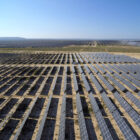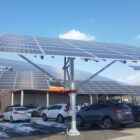Carefree O&M – Part 1 – Count Your Sheep
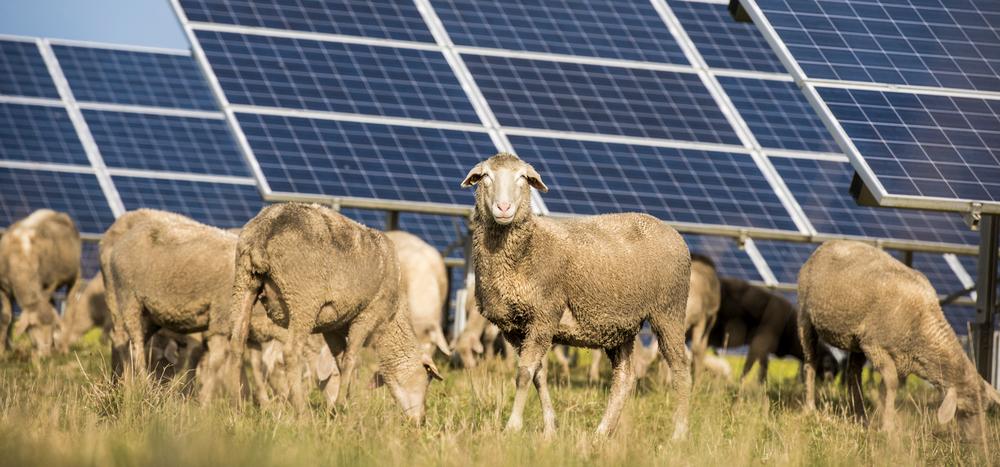
As Operations and Maintenance becomes a hotter topic in the Solar and Solar Tracking industry, there has been many approaches to lower costs and minimize risk in the design and installation of solar farms. There have been a wide variety of approaches in each area of solar farm O&M costs and savings. In this article, we will discuss a practice that is becoming more common amongst utility scale solar farm developers across the country.
Options for Land Operations and Maintenance (O&M)
During the development of utility scale solar farms, there are so many operational parts in motion that if the land had not been graded and trampled, that it will be before the installation is done. The sites are often left looking bare and lacking grass as the project installation heads near completion. Not too far after however, mother nature takes over and grass starts growing and spreading quickly. This creates the need for landscaping services and workers to maintain the acres and acres of property to ensure proper functionality of the system.
The Old Fashion Way
Many developers choose to periodically mow the property which takes multiple days and workers, while creating risks that need not be created. Some of the inherent risks include but are not limited to:
While mowing properties this vast, it is likely that at some point something will be struck by the mowers. This could be something natural such as a rock, or something left behind from development such as a nut or bolt. This creates a risk to workers, but also to the solar farm itself, by cracking or shattering panels that then would need to be replaced.
Mowers also kick up quite a bit of dust no matter what the condition of the soil and property is. This sand and dust settles on the panels, making them less efficient and creates the need for the panels to be cleaned more frequently
Though this method is widely adopted many developers are looking for alternative methods to lower O&M costs and to minimize financial risk on each project.
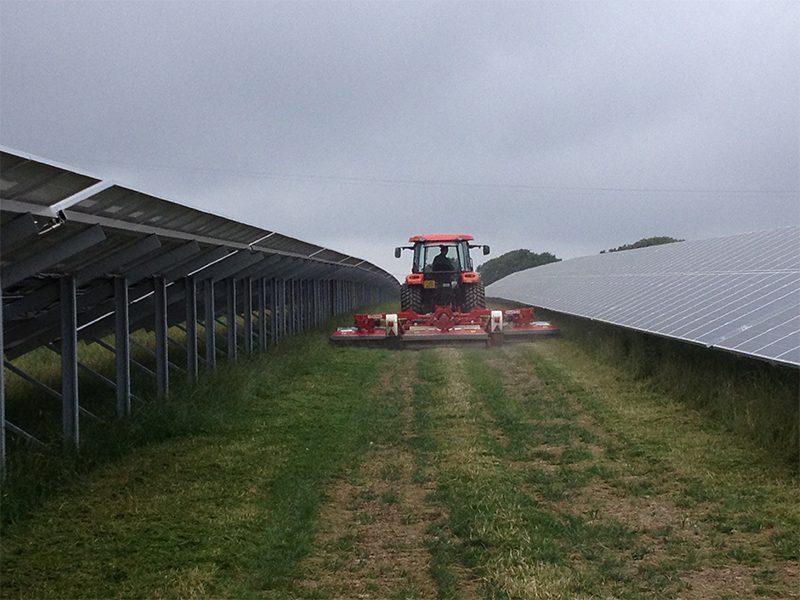
Genetically Modified Flora
One of these alternative methods is to plant “low growing grass” which has been genetically engineered to grow to a certain height and stop. This method has proven to be effective in some areas, but the major drawback is weeds. As the grass grows, weeds become an inevitable part of the landscape. Since the weeds will never stop growing, this again creates the need for human intervention on a constant and continuous basis causing a hike in O&M costs. Another option in modifying the landscape is using herbicides and chemicals to keep the grass and weeds at bay. This option works but it is contrary to the “eco-friendly” passion that renewable energy harvesting is based on. Though this may be a viable solution, it creates risk to the environment and surrounding areas.
Keep it "Simple Solar" (KISS)
The simplest solution in solar is usually the best. Systems are designed with minimal moving parts and are highly engineered to maximize efficiency and lower O&M costs. Why wouldn’t you look for the simplest solution when it comes to land O&M costs? Many solar farm developers from California, Texas, North and South Carolina and even Europe are adopting a simple and hyper-effective solution that is lowering land O&M costs and providing opportunities for the local economy and is completely eco-friendly.
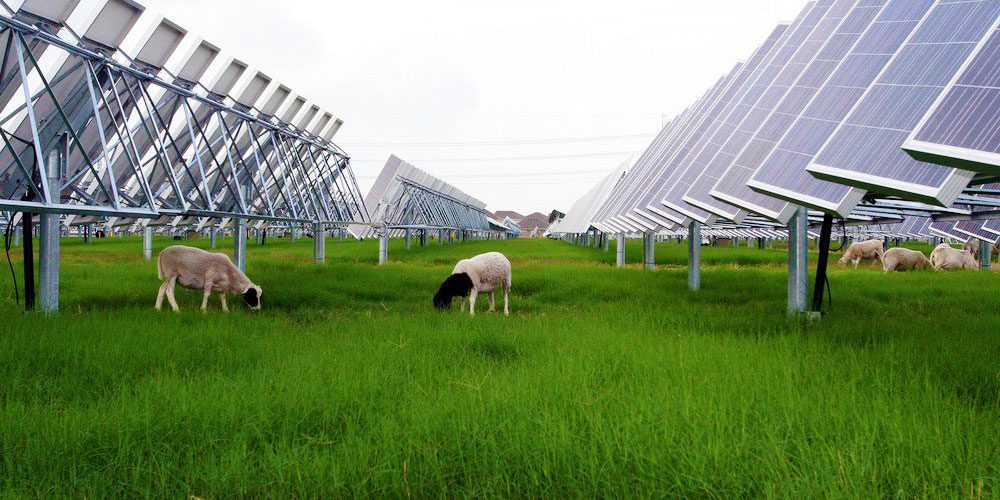
Send in the Sheep
The aforementioned solution that has been adopted globally is the use of livestock, preferably sheep to maintain your land for you during the harvesting of your solar energy. Sheep are low maintenance requiring only water and food, which is the growing grass in most solar farms. States like California and North Carolina have widely adopted this solution and are showing incremental decreases in land O&M costs, while creating a thriving industry for farmers in the local economies surrounding their solar farms. In North Carolina, there are sheep farmers that will even offer their flock for free for use at the solar farms in return for the free food that their flock consumes.
Environmentally and Financially Symbiotic Relationships
Not only is this method environmentally friendly, but it also creates more revenue through shared resources and legal loopholes. In many states developers are charged an Energy Tax for the land usage, whereas agricultural land is not subject to the same taxing. This creates a revenue increase from the partnership between farmer and developer. It also saves the farmers money due to a seemingly unlimited food source. The marriage between farmer and developer is truly a symbiotic one as both parties have much to gain, while also lowering costs on both sides. On the environmental side, both parties are allowing nature to run its course while causing no harm to the land or the surrounding areas. It also allows the developer to “cut the cord” of reliance on fossil fuels for land O&M, which we are sure that mother nature welcomes.
Not Just a Developer Farmer Relationship
Since the development of these relationships major brands have gotten involved bringing the process full circle. Whole Foods, a national organic grocery market started selling “solar farm sheep” when it started selling lamb chops of sheep that had been exclusively raised on Solar Farms. Sun Raised Farms is the name of the company that landed the opportunity with Whole Foods, providing their lamb chops exclusively for the nation’s healthiest supermarket. The buying motivation for Whole Foods is that the sheep are essentially free range, raised organically in expansive open spaces.
Key Take away
Many of the solar farm developers in North America are beginning to use sheep to graze and maintain their solar farms. The sheep are low cost and even free in some cases, creating a relationship between farmer and developer where everyone wins. Financially it makes sense to use sheep as there are available tax breaks, unlimited food for the animals and no need to O&M risks by using machinery, human labor, and chemicals. In Solar Energy Harvesting, simplicity is key to lowering O&M costs and minimizing risk.
In this piece, you will have a detailed look at Single Axis Trackers and how they can be of benefit to any solar power plant, whether commercial or residential.


